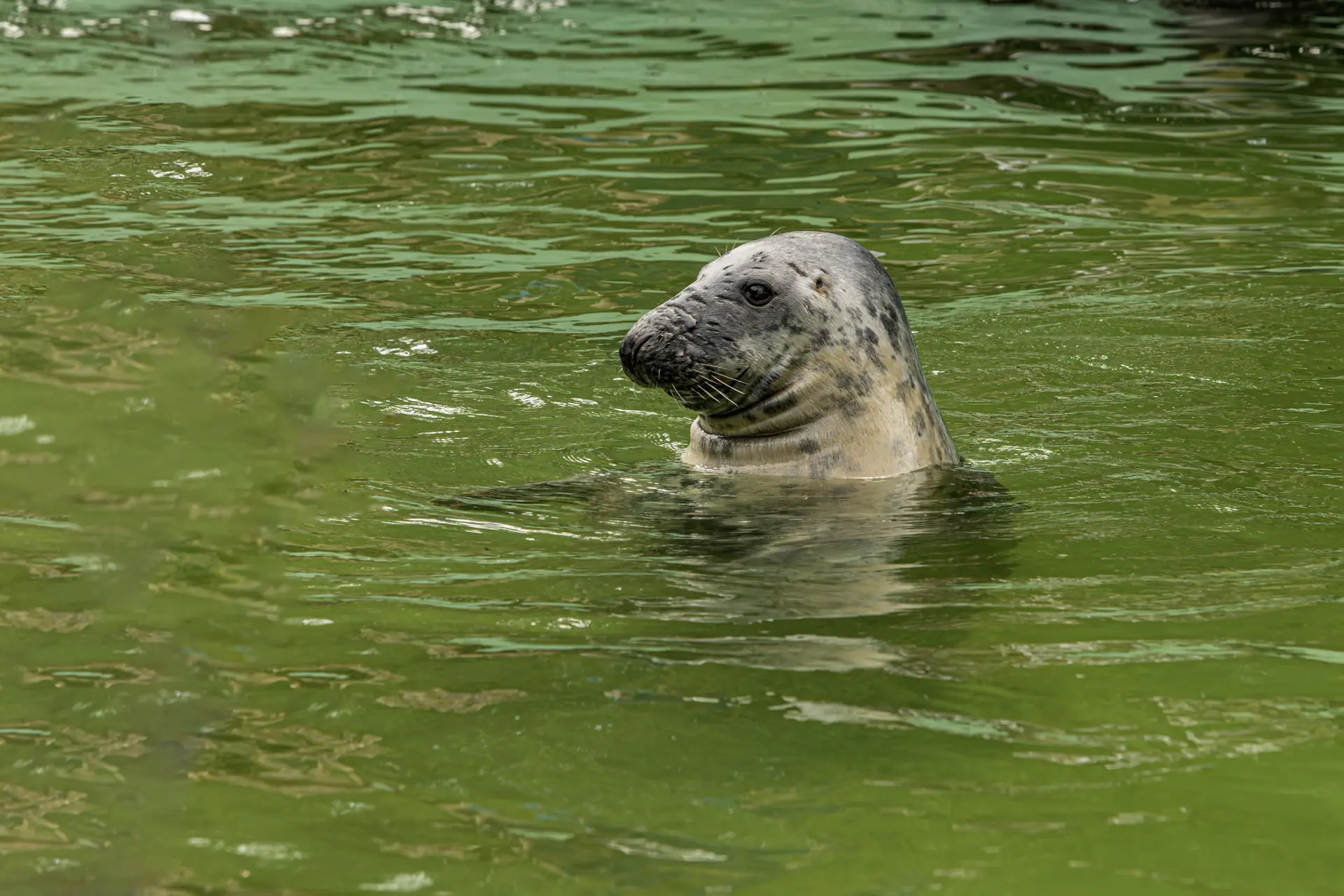Halichoerus grypus, commonly known as the grey seal, is a large species of seal found on both sides of the North Atlantic Ocean. Here is an in-depth overview of this marine mammal:
Appearance
- Size: Grey seals are sexually dimorphic, meaning males and females differ in size and appearance. Males are larger, typically measuring between 2.1 and 2.7 meters in length and weighing 170-310 kilograms. Females are smaller, measuring between 1.6 and 2.0 meters and weighing 100-190 kilograms.
- Coloration: Their coloration varies, but they generally have a grey to brownish-grey coat with various dark spots and patches. Males tend to be darker with more pronounced markings, while females are lighter with fewer spots.
- Head Shape: Grey seals have a long, horse-like head with a straight profile and relatively wide-set nostrils, distinguishing them from other seal species.
Habitat
- Preferred Habitats: Grey seals are typically found in coastal waters, often on rocky shores, sandbanks, and ice floes. They prefer areas with easy access to both land for resting and open water for foraging.
- Geographic Range: They are distributed across the North Atlantic, with significant populations around the coasts of the UK, Ireland, the northeastern United States, and Canada. Smaller populations exist in the Baltic Sea and parts of Norway and Iceland.
Behavior
- Diet: Grey seals are opportunistic feeders, primarily eating fish such as cod, herring, and sand eels. They also consume cephalopods and crustaceans. Their diet can vary significantly depending on location and prey availability.
- Reproduction: Breeding season varies by region but generally occurs from September to December. Females give birth to a single pup after an 11-month gestation period. Pups are born with a thick, white lanugo coat, which they shed after a few weeks.
- Social Structure: Grey seals are gregarious, often found in large colonies, especially during the breeding and molting seasons. Outside these periods, they are more solitary, spending time foraging in the open sea.
Ecological Role
- Predator and Prey: As apex predators, grey seals play a critical role in maintaining the balance of marine ecosystems. They help regulate fish populations and, in turn, serve as prey for large sharks and orcas.
- Indicator Species: Due to their sensitivity to changes in the marine environment, grey seals are considered indicator species. Their health reflects the overall state of their ecosystem.
Interesting Facts
- Long-lived: Grey seals can live up to 35 years in the wild, with females generally living longer than males.
- Vocalizations: They are known for their vocalizations, which include a variety of sounds such as growls, howls, and moans, especially during the breeding season.
- Diving Ability: Grey seals are excellent divers, capable of diving to depths of up to 300 meters and holding their breath for over an hour.
Identification Tips
- Head Profile: The straight, horse-like profile of their head and widely spaced nostrils are key identifying features.
- Size and Shape: Their large size and the dimorphic differences between males and females help in identification.
- Color Pattern: The grey to brownish-grey coat with various spots and patches, combined with the head shape, distinguishes them from other seals.
Summary
The grey seal (Halichoerus grypus) is a significant marine mammal species in the North Atlantic, recognized for its large size, distinctive head shape, and variable coloration. With important ecological roles as predators and indicators of marine health, grey seals are a vital part of their ecosystems. Found in coastal waters and on shores from the UK to the northeastern US, these seals are an intriguing species with notable behaviors and adaptations.
Visited 869 times, 4 visit(s) today
Views: 1358
Subscribe to the newsletter:
